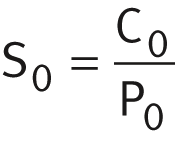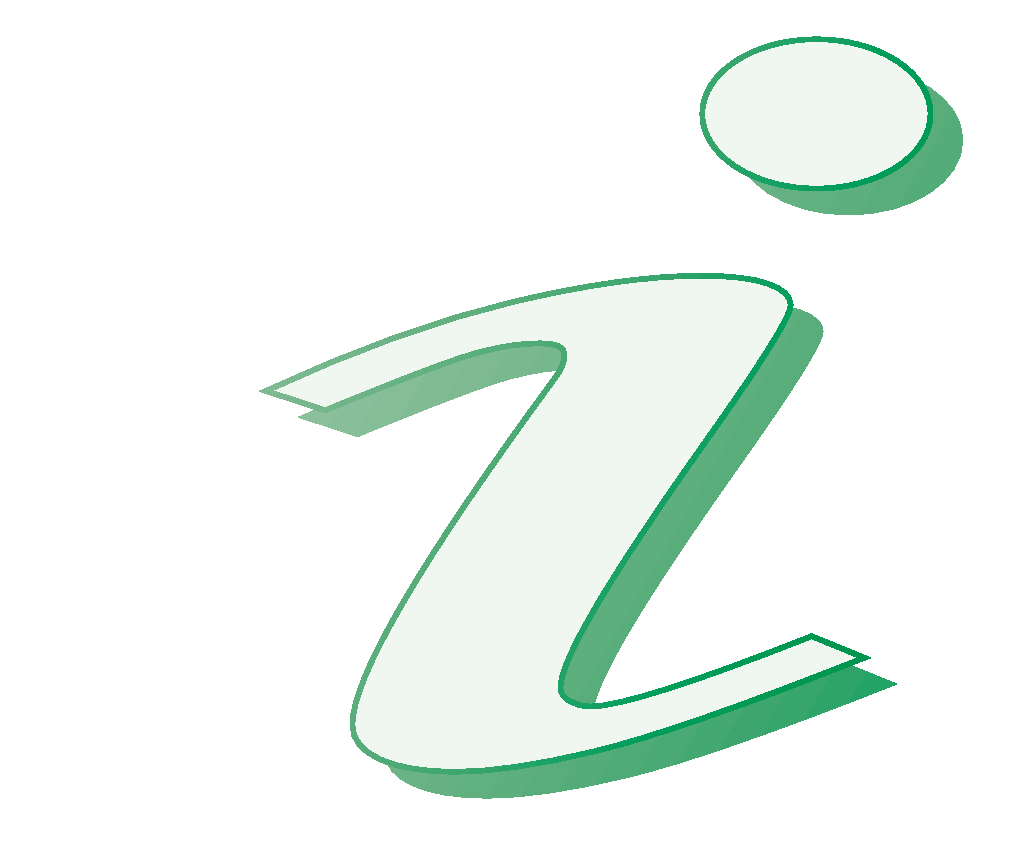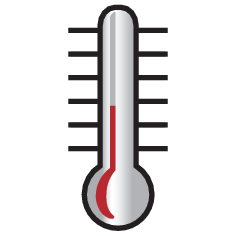Angular Contact Ball Bearing Drawing
Angular contact ball bearings
Double row angular contact ball bearings
Double row angular contact ball bearings are particularly suitable where:
- the design envelope is not sufficient under high loads for a pair of single row angular contact ball bearings
- high radial and axial loads are acting simultaneously
- tilting moments must also be supported
- a relatively rigid bearing arrangement is required
- the bearing arrangement is to run quietly in addition to meeting the requirements stated above
| Double row angular contact ball bearing – B = total width of bearing or bearing set |  |
Bearing design
Design variants
Double row angular contact ball bearings are available as:
- bearings of basic design ➤ Figure
- bearings with filling slot ➤ Figure
- bearings with split inner ring ➤ Figure
- X-life bearings ➤ link
Larger catalogue bearings and other bearing designs GL 1.
Bearings of basic design
Comparable with a pair of single row angular contact ball bearings
Double row bearings correspond in their structure to a pair of single row angular contact ball bearings in an O arrangement, but they are narrower to a certain extent. They differ in the size of the contact angle α and the design of the bearing rings. Due to the manufacturing processes used, open bearings, which are also available with sealing washers or sealing shields, can have turned recesses in the outer and/or inner ring for sealing washers or sealing shields.
Extensive and versatile range of product variants
Bearings of series 38..-B(-2RSR, -2Z), 30..-B(-2RSR, -2Z), 32..-B(-2RSR, ‑2Z), 32..-BD(-2HRS), 33..-B(-2RSR, -2Z), 33..BD(-2HRS) are self-retaining. They do not have filling slots in the end faces of the bearings rings ➤ Figure. Bearings of series 32..-BD and 33..-BD have an optimised internal construction.
In design terms, double row angular contact ball bearings thus fulfil the requirements for:
- supporting axial loads in both directions and high radial loads
- low-noise running
- versatile application
Nominal contact angle α = 25° or 30°
The nominal contact angle α in B designs is 25°, in the case of the BD variant , this is 30°.
| Double row angular contact ball bearing Fr = radial load Fa = axial load α = nominal contact angle |  |
Bearings with filling slot
Nominal contact angle α = 35°
Angular contact ball bearings of series 32 and 33 are self-retaining. They have filling slots on one end face of the bearing ring for filling the bearings with rolling elements ➤ Figure. The nominal contact angle is α = 35°.
These series must be fitted such that the main load direction is supported by the row of balls without filling slots under axial load.
| Double row angular contact ball bearing Fr = radial load Fa = axial load α = nominal contact angle |  |
Bearings with split inner ring
Nominal contact angle α = 45°
In angular contact ball bearings of series 33..-DA, the inner ring is split ➤ Figure. The inner rings are not self-retaining. Filling the bearings with a large number of balls – in conjunction with the internal design of the bearing and the contact angle of 45° – allows high alternating axial loads to be supported.
The inner ring halves are matched to the particular bearing and must not be interchanged with those of other bearings of the same size.
| Double row angular contact ball bearing Fr = radial load Fa = axial load α = nominal contact angle |  |
X-life premium quality
Bearings of series 32..-BD and 33..-BD are X-life bearings ➤ link. These bearings exhibit considerably higher performance than standard double row angular contact ball bearings ➤ Figure. This is achieved, for example, through the modified internal construction, higher surface quality of the contact surfaces and optimised cage design, as well as through the improved quality of the steel and rolling elements.
Advantages
Increased customer benefits due to X-life
The technical enhancements offer a range of advantages, such as:
- a more favourable load distribution in the bearing and thus a higher dynamic load carrying capacity of the bearings ➤ Figure
- quieter running
- running with reduced friction and greater energy efficiency
- lower heat generation in the bearing
- higher possible speeds
- lower lubricant consumption and, consequently, longer maintenance intervals
- a measurably longer operating life of the bearings
- high operational security
- compact, environmentally-friendly bearing arrangements
Lower operating costs, higher machine availability
In conclusion, these advantages improve the overall cost-efficiency of the bearing position significantly and thus bring about a sustainable increase in the efficiency of the machine and equipment.
Suffix XL
X-life angular contact ball bearings include the suffix XL in the designation ➤ Figure, ➤ Figure and ➤ link.
| Comparison of basic dynamic load rating Cr = basic dynamic load rating |  |
Areas of application
Wide application range
Due to their special technical features, double row X-life angular contact ball bearings are highly suitable for bearing arrangements in:
- compressors
- fluid and hydraulic pumps
- automotive chassis and gearboxes
- industrial gearboxes
- agricultural vehicles
- elevators and packaging equipment
- heavy motorbikes
- machine tools
- textile machinery
X-life indicates a high product performance density and thus a particularly significant benefit to the customer.
Load carrying capacity
Capable of supporting axial loads in both directions and radial loads
In addition to high radial loads, double row angular contact ball bearings can also support axial forces in both directions and tilting moments ➤ Figure. They are highly suitable for bearing arrangements with rigid axial guidance.
Contact angle and axial load carrying capacity
The bearings are available with α = 25°, 30°, 35° and 45° ➤ Figure to ➤ Figure. The axial load carrying capacity increases with the size of the contact angle. In bearings without filling slots, it is the same in both directions.
Compensation of angular misalignments
The angular adjustment facility is very limited
The bearings are not suitable for the compensation of angular misalignments. In addition, misalignments induce internal forces, which not only lead to higher temperatures, but also to a reduction in the bearing rating life.
Lubrication
Angular contact ball bearings sealed on both sides are maintenance-free
Open bearings and bearings with seals on both sides are greased using a high quality grease. Bearings sealed on both sides are maintenance-free for many applications, i.e. they do not require relubrication.
Open bearings must be lubricated
Angular contact ball bearings without seals and with seals on one side of series 32.., 33.., 33..-DA, 32..-BD and 33..-BD are not preserved or greased. These bearings must be lubricated with oil or grease.
Compatibility with plastic cages
When using bearings with plastic cages, compatibility between the lubricant and the cage material must be ensured if synthetic oils, lubricating greases with a synthetic oil base or lubricants containing a high proportion of EP additives are used.
Observe oil change intervals
Aged oil and additives in the oil can impair the operating life of plastics at high temperatures. As a result, stipulated oil change intervals must be strictly observed.
Sealing
2RS, 2RSR and 2HRS seals are contact designs
Series 38..-B, 30..-B, 32..-B and 33..-B with the suffix 2RS, 2RSR and 2HRS have lip seals in axial contact on both sides and in radial contact ➤ Table. Bearings with the suffix RS, HRS and RSR are sealed on one side with lip seals in axial and radial contact.
2Z sealing shields and 2RZ seals are non-contact designs
Bearing series with the suffix 2Z have sheet steel sealing shields on both sides. Bearings with the suffix 2RZ are fitted with rubberised gap seals on both sides.
Open bearings
In the case of unsealed bearings, sealing must be carried out by the adjacent construction. The sealing system should reliably prevent:
- moisture and contaminants from entering the bearing
- the egress of lubricant from the bearing
Speeds
Limiting speeds and reference speeds in the product tables
The product tables give two speeds for most bearings:
- the kinematic limiting speed nG
- the thermal speed rating nϑr
Limiting speeds
The limiting speed nG is the kinematically permissible speed of the bearing. Even under favourable mounting and operating conditions, this value should not be exceeded without prior consultation with Schaeffler ➤ link.
The values given in the product tables are valid for oil lubrication in the case of bearings without seals or shields and for grease lubrication where bearings are supplied greased and with seals or shields.
Values for grease lubrication
For grease lubrication, 75% of the value stated in the product tables is permissible in each case.
Reference speeds
nϑr is used to calculate nϑ
The thermal speed rating nϑr is not an application-oriented speed limit, but is a calculated ancillary value for determining the thermally safe operating speed nϑ ➤ link.
Bearings with contact seals
For bearings with contact seals, no speed ratings are defined in accordance with DIN ISO 15312:2004. As a result, only the limiting speed nG is given in the product tables for these bearings.
Noise
The Schaeffler Noise Index (SGI) has been developed as a new feature for comparing the noise level of different bearing types and series. As a result, a noise evaluation of rolling bearings can now be carried out for the first time.
Schaeffler Noise Index
The SGI value is based on the maximum permissible noise level of a bearing in accordance with internal standards, which is calculated on the basis of ISO 15242. In order that different bearing types and series can be compared, the SGI value is plotted against the basic static load rating C0.
This permits direct comparisons between bearings with the same load carrying capacity. The upper limit value is given in each of the diagrams. This means that the average noise level of the bearings is lower than illustrated in the diagram.
The Schaeffler Noise Index is an additional performance characteristic in the selection of bearings for noise-sensitive applications. The specific suitability of a bearing for an application in terms of installation space, load carrying capacity or speed limit for example, must be checked independently of this.
| Schaeffler Noise Index SGI = Schaeffler Noise Index C0 = basic static load rating |  |
Temperature range
Limiting values
The operating temperature of the bearings is limited by:
- the dimensional stability of the bearing rings and rolling elements
- the cage
- the lubricant
- the seals
Possible operating temperatures of double row angular contact ball bearings ➤ Table.
Permissible temperature ranges
| Operating temperature | Double row angular contact ball bearings, open | Double row angular contact ball bearings, sealed | |
|---|---|---|---|
| with sheet steel or brass cage | with polyamide cage PA66 | ||
| | ungreased | –30 °C to +120 °C, | –30 °C to +110 °C, |
| series 30, 38, 32..-BD and 33..-BD, D ≦ 90 mm, | |||
In the event of anticipated temperatures which lie outside the stated values, please contact Schaeffler.
Cages
Solid cages made from brass and PA66, as well as sheet steel cages, are used as standard
Standard cages and additional cage designs for double row angular contact ball bearings are made from brass, polyamide or steel ➤ Table. Other cages are available by agreement. With such cages, however, suitability for high speeds and temperatures as well as the basic load ratings may differ from the values for the bearings with standard cages.
For high continuous temperatures and applications with difficult operating conditions, bearings with brass or sheet steel cages should be used. If there is any uncertainty regarding cage suitability, please consult Schaeffler.
Cage, cage suffix, bore code
| Bearing series | Solid cage | Solid cage | Sheet steel cage | |||
|---|---|---|---|---|---|---|
| TVH, TVP | M, MA | |||||
| standard | also available for | standard | also available for | standard | also available for | |
| Bore code | ||||||
| 32 | ‒ | ‒ | 19, 21, 22 | 18, 20 | 17, 18, 20 | ‒ |
| 33 | ‒ | ‒ | 17, 19, 20, 22 | 18 | 14 to 16, 18 | 20 |
| 30..-B | up to 08 | ‒ | ‒ | ‒ | ‒ | ‒ |
| 32..-B | 00, 01, 14 to 18, 20 | ‒ | ‒ | ‒ | ‒ | ‒ |
| 33..-B | 01, 12 | ‒ | ‒ | ‒ | ‒ | ‒ |
| 38..-B | 00 to 12, 14, 16, 18, 20 | ‒ | ‒ | ‒ | ‒ | ‒ |
| 32..-BD | ‒ | 02 to 13 | ‒ | ‒ | 02 to 13 | ‒ |
| 33..-BD | ‒ | 02 to 11, 13, 14, 16 | ‒ | ‒ | 04 to 11, 13, 14 | ‒ |
| 33..-DA | 05 | ‒ | 08, 10, 11, 15 to 22 | 05, 06, 07, 09, 12, 13, 14 | 06, 07, 09, 12, 13, 14 | 05 |
Internal clearance
Axial internal clearance – bearings with unsplit inner ring
Double row angular contact ball bearings with unsplit inner ring of the basic design have the axial internal clearance CN (group N) in accordance with DIN 628-3:2008 ➤ Table.
Bearings can also be supplied with an axial internal clearance which is larger or smaller than CN (C3, C4 or C2). In this case, please contact Schaeffler.
Axial internal clearance of double row angular contact ball bearings with unsplit inner ring
| Nominal | Axial internal clearance | ||||||||
|---|---|---|---|---|---|---|---|---|---|
| d mm | C2 μm | CN μm | C3 μm | C4 μm | |||||
| over | incl. | min. | max. | min. | max. | min. | max. | min. | max. |
| ‒ | 10 | 1 | 11 | 5 | 21 | 12 | 28 | 25 | 45 |
| 10 | 18 | 1 | 12 | 6 | 23 | 13 | 31 | 27 | 47 |
| 18 | 24 | 2 | 14 | 7 | 25 | 16 | 34 | 27 | 47 |
| 24 | 30 | 2 | 15 | 8 | 27 | 18 | 37 | 30 | 50 |
| 30 | 40 | 2 | 16 | 9 | 29 | 21 | 40 | 33 | 54 |
| 40 | 50 | 2 | 18 | 11 | 33 | 23 | 44 | 36 | 58 |
| 50 | 65 | 3 | 22 | 13 | 36 | 26 | 48 | 40 | 63 |
| 65 | 80 | 3 | 24 | 15 | 40 | 30 | 54 | 46 | 71 |
| 80 | 100 | 3 | 26 | 18 | 46 | 35 | 63 | 55 | 83 |
| 100 | 120 | 4 | 30 | 22 | 53 | 42 | 73 | 65 | 96 |
| 120 | 140 | 4 | 34 | 25 | 59 | 48 | 82 | 74 | 108 |
Axial internal clearance – bearings with split inner ring
Standard corresponds approximately to C3 for unsplit bearings
Bearings with a split inner ring are intended for higher axial loads. As a result, they generally also have a tighter fit than unsplit bearings. Their normal internal clearance corresponds approximately to the internal clearance group C3 for unsplit bearings ➤ Table.
Axial internal clearance of double row angular contact ball bearings with split inner ring
| Nominal | Axial internal clearance | ||||||
|---|---|---|---|---|---|---|---|
| d mm | C2 μm | CN μm | C3 μm | ||||
| over | incl. | min. | max. | min. | max. | min. | max. |
| 24 | 30 | 8 | 27 | 16 | 35 | 27 | 46 |
| 30 | 40 | 9 | 29 | 18 | 38 | 30 | 50 |
| 40 | 50 | 11 | 33 | 22 | 44 | 36 | 58 |
| 50 | 65 | 13 | 36 | 25 | 48 | 40 | 63 |
| 65 | 80 | 15 | 40 | 29 | 54 | 46 | 71 |
Dimensions, tolerances
Dimension standards
The main dimensions of double row angular contact ball bearings correspond to DIN 628-3:2008. Nominal dimensions of double row angular contact ball bearings ➤ link.
Chamfer dimensions
The limiting dimensions for chamfer dimensions correspond to DIN 620‑6:2004. Overview and limiting values ➤ section. Nominal value of chamfer dimension ➤ link.
Tolerances
The tolerances for the dimensional and running accuracy of double row angular contact ball bearings correspond to tolerance class Normal in accordance with ISO 492:2014; the dimensional and running tolerances of bearings with the suffix BD correspond to the tolerance class 6 in accordance with ISO 492:2014. Tolerance values in accordance with ISO 492 ➤ link and ➤ link.
Suffixes
For a description of the suffixes used in this chapter see ➤ Table and medias interchange http://www.schaeffler.de/std/1B69.
Suffixes and corresponding descriptions
| Suffix | Description of suffix | |
|---|---|---|
| B | Modified internal construction, | Standard |
| BD | Modified internal construction, | Standard |
| C2 | Axial internal clearance C2 (smaller than normal) | Available by agreement |
| C3 | Axial internal clearance C3 (larger than normal) | Available by agreement |
| C4 | Axial internal clearance C4 (larger than C3) | Available by agreement |
| DA | Inner ring split, nominal contact angle α = 45° | Standard |
| M | Solid brass cage, ball-guided | Standard, dependent on bore code |
| MA | Solid brass cage, guided on outer ring | Standard, dependent on bore code |
| TVH | Solid cage made from glass fibre reinforced polyamide PA66, ball-guided | Standard, dependent on bore code |
| 2HRS | Contact seal on both sides, axial contact (lip seal) | Standard |
| 2RS | Contact seal on both sides, axial contact (lip seal) | Standard |
| 2RSR | Contact seal on both sides, radial contact (lip seal) | Standard |
| 2RZ | Non-contact seals on both sides (rubberised gap seal) | Standard |
| 2Z | Non-contact sealing shield on both sides (sheet metal gap seal) | Standard |
| HRS | Contact seal on one side, axial contact (lip seal) | Special design, available by agreement |
| RS | Contact seal on one side, axial contact (lip seal) | Special design, available by agreement |
| RSR | Contact seal on both sides, radial contact (lip seal) | Special design, available by agreement |
| RZ | Non-contact seal on one side (rubberised gap seal) | Special design, available by agreement |
| Z | Non-contact sealing shield on one side (sheet metal gap seal) | Special design, available by agreement |
| XL | X-life bearing, dependent on bore code and bearing type | Special design, available by agreement |
Structure of bearing designation
Examples of composition of bearing designation
The designation of bearings follows a set model. Examples ➤ Figure and ➤ Figure. The composition of designations is subject to DIN 623-1 ➤ link.
| Double row angular contact ball bearing of basic design: designation structure |  |
| Double row angular contact ball bearing with split inner ring: designation structure |  |
Dimensioning
Equivalent dynamic bearing load
Valid for α = 25°, 30°, 35°, 45°
The calculation of P is dependent on the nominal contact angle α of the bearing, the load ratio Fa/Fr and the calculation factors from ➤ Equation to ➤ Equation.
The further fundamental information on the calculation of the equivalent dynamic bearing load must be observed ➤ section.
Equivalent dynamic load
α = 25°

Equivalent dynamic load
α = 25°

Equivalent dynamic load
α = 30°

Equivalent dynamic load
α = 30°

Equivalent dynamic load
α = 35°

Equivalent dynamic load
α = 35°

Equivalent dynamic load
α = 45°

Equivalent dynamic load
α = 45°

Legend
| P | N | Equivalent dynamic bearing load |
| Fr | N | Radial load |
| Fa | N | Axial load |
Equivalent static bearing load
Valid for α = 25°, 30°, 35°, 45°
Calculation of the equivalent static bearing load P0 is dependent on the nominal contact angle α and the calculation factors ➤ Equation to ➤ Equation.
Equivalent static load
α = 25°

Equivalent static load
α = 30°

Equivalent static load
α = 35°

Equivalent static load
α = 45°

Legend
| P0 | N | Equivalent static bearing load |
| F0r, F0a | N | Largest radial or axial load present (maximum load) |
Static load safety factor
In addition to the basic rating life L (L10h), it is also always necessary to check the static load safety factor S0 ➤ Equation.
Static load safety factor

Legend
| S0 | - | Static load safety factor |
| C0 | N | Basic static load rating |
| P0 | N | Equivalent static bearing load |
Minimum load
In order to prevent damage due to slippage, a minimum radial load of P > C0r /100 is required
In order that no slippage occurs between the contact partners, the double row angular contact ball bearings must be constantly subjected to a sufficiently high load. Based on experience, a minimum radial load of the order of P > C0r/100 is thus necessary. In most cases, however, the radial load is already higher than the requisite minimum load due to the weight of the supported parts and the external forces.
If the minimum radial load is lower than indicated above, please consult Schaeffler.
Design of bearing arrangements
Support bearing rings over their entire circumference and width
In order to allow full utilisation of the load carrying capacity of the bearings and thus also achieve the requisite rating life, the bearing rings must be rigidly and uniformly supported by means of contact surfaces over their entire circumference and over the entire width of the raceway. Support can be provided by means of a cylindrical seating surface. The seating and contact surfaces should not be interrupted by grooves, holes or other recesses. The accuracy of mating parts must meet specific requirements ➤ Table to ➤ Table.
Radial location of bearings – fit recommendations
For secure radial location, tight fits are necessary
In addition to supporting the rings adequately, the bearings must also be securely located in a radial direction, to prevent creep of the bearing rings on the mating parts under load. This is generally achieved by means of tight fits between the bearing rings and the mating parts. If the rings are not secured adequately or correctly, this can cause severe damage to the bearings and adjacent machine parts. Influencing factors, such as the conditions of rotation, magnitude of the load, internal clearance, temperature conditions, design of the mating parts and the mounting and dismounting options must be taken into consideration in the selection of fits.
If shock type loads occur, tight fits (transition fit or interference fit) are required to prevent the rings from coming loose at any point. Clearance, transition or interference fits ➤ link.
The following information provided in Technical principles must be taken into consideration in the design of bearing arrangements:
- conditions of rotation ➤ link
- tolerance classes for cylindrical shaft seats (radial bearings) ➤ link
- shaft fits ➤ link
- tolerance classes for bearing seats in housings (radial bearings) ➤ link
- housing fits ➤ link
Axial location of bearings – location methods
The bearings must also be securely located in an axial direction
As a tight fit alone is not normally sufficient to also locate the bearing rings securely on the shaft and in the housing bore in an axial direction, this must usually be achieved by means of an additional axial location or retention method. The axial location of the bearing rings must be matched to the type of bearing arrangement. Shaft and housing shoulders, housing covers, nuts, spacer rings and retaining rings etc., are fundamentally suitable.
Dimensional, geometrical and running accuracy of the bearing seats
For bearings with tolerance class Normal, a minimum of IT6 should be provided for the shaft seat and a minimum of IT7 for the housing seat
The accuracy of the bearing seat on the shaft and in the housing should correspond to the accuracy of the bearing used. For double row angular contact ball bearings with the tolerance class Normal, the shaft seat should correspond to a minimum of standard tolerance grade IT6 and the housing seat to a minimum of IT7; with tolerance class 6, the shaft seat should correspond to a minimum of IT5 and the housing seat to IT6. Guide values for the geometrical and positional tolerances of bearing seating surfaces ➤ Table, tolerances t1to t3 in accordance with ➤ link. Numerical values for IT grades ➤ Table.
Guide values for the geometrical and positional tolerances of bearing seating surfaces
| Bearing | Bearing seating surface | Standard tolerance grades to ISO 286-1 | ||||
|---|---|---|---|---|---|---|
| to ISO 492 | to DIN 620 | Diameter tolerance | Roundness tolerance | Parallelism tolerance | Total axial runout tolerance of abutment shoulders | |
| t1 | t2 | t3 | ||||
| Normal | PN (P0) | Shaft | IT6 (IT5) | Circumferential load | Circumferential load | IT4 |
| Shaft | IT6 (IT5) | Point load | Point load | IT4 | ||
| Housing | IT7 (IT6) | Circumferential load | Circumferential load | IT5 | ||
| Housing | IT7 (IT6) | Point load | Point load | IT5 | ||
| 6 | P6 | Shaft | IT5 | Circumferential load IT3/2 | Circumferential load IT3/2 | IT3 |
| Shaft | IT5 | Point load IT4/2 | Point load IT4/2 | IT3 | ||
| Housing | IT6 | Circumferential load IT4/2 | Circumferential load IT4/2 | IT4 | ||
| Housing | IT6 | Point load IT5/2 | Point load IT5/2 | IT4 | ||
Numerical values for ISO standard tolerances (IT grades) to ISO 286-1:2010
| IT grade | Nominal dimension in mm | ||||||||
|---|---|---|---|---|---|---|---|---|---|
| over | 3 | 6 | 10 | 18 | 30 | 50 | 80 | 120 | |
| incl. | 6 | 10 | 18 | 30 | 50 | 80 | 120 | 180 | |
| Values in μm | |||||||||
| IT3 | 2,5 | 2,5 | 3 | 4 | 4 | 5 | 6 | 8 | |
| IT4 | 4 | 4 | 5 | 6 | 7 | 8 | 10 | 12 | |
| IT5 | 5 | 6 | 8 | 9 | 11 | 13 | 15 | 18 | |
| IT6 | 8 | 9 | 11 | 13 | 16 | 19 | 22 | 25 | |
| IT7 | 12 | 15 | 18 | 21 | 25 | 30 | 35 | 40 | |
Roughness of cylindrical bearing seats
Ra must not be too high
The roughness of the bearing seats must be matched to the tolerance class of the bearings. The mean roughness value Ra must not be too high, in order to maintain the interference loss within limits. The shafts must be ground, while the bores must be precision turned. Guide values as a function of the IT grade of bearing seating surfaces ➤ Table.
Roughness values for cylindrical bearing seating surfaces – guide values
| Nominal diameter d (D) | Recommended mean roughness value Ramax | ||||
|---|---|---|---|---|---|
| mm | μm | ||||
| Diameter tolerance (IT grade) | |||||
| over | incl. | IT7 | IT6 | IT5 | IT4 |
| ‒ | 80 | 1,6 | 0,8 | 0,4 | 0,2 |
| 80 | 500 | 1,6 | 1,6 | 0,8 | 0,4 |
Mounting dimensions for the contact surfaces of bearing rings
The contact surfaces for the rings must be of sufficient height
The mounting dimensions of the shaft and housing shoulders, and spacer rings etc., must ensure that the contact surfaces for the bearing rings are of sufficient height. However, they must also reliably prevent rotating parts of the bearing from grazing stationary parts. Proven mounting dimensions for the radii and diameters of abutment shoulders. These dimensions are limiting dimensions (maximum or minimum dimensions); the actual values should not be higher or lower than specified.
Mounting and dismounting
The mounting and dismounting options for angular contact ball bearings, by thermal, hydraulic or mechanical methods, must be taken into consideration in the design of the bearing position.
Ensure that the bearings are not damaged during fitting
In the mounting of non-separable (self-retaining) angular contact bearings, the mounting forces must always be applied to the bearing ring with a tight fit.
Bearings with split inner ring
Simplified mounting of bearings due to split inner ring
These angular contact ball bearings are not self-retaining. As a result, the outer ring with the ball and cage assembly can be mounted separately from the two inner ring halves. This gives simplified mounting of the bearings.
Schaeffler Mounting Handbook
Rolling bearings must be handled with great care
Rolling bearings are well-proven precision machine elements for the design of economical and reliable bearing arrangements, which offer high operational security. In order that these products can function correctly and achieve the envisaged operating life without detrimental effect, they must be handled with care.
The Schaeffler Mounting Handbook MH 1 gives comprehensive information about the correct storage, mounting, dismounting and maintenance of rotary rolling bearings http://www.schaeffler.de/std/1B68. It also provides information which should be observed by the designer, in relation to the mounting, dismounting and maintenance of bearings, in the original design of the bearing position. This book is available from Schaeffler on request.
Legal notice regarding data freshness
The further development of products may also result in technical changes to catalogue products
Of central interest to Schaeffler is the further development and optimisation of its products and the satisfaction of its customers. In order that you, as the customer, can keep yourself optimally informed about the progress that is being made here and with regard to the current technical status of the products, we publish any product changes which differ from the printed version in our electronic product catalogue.
We therefore reserve the right to make changes to the data and illustrations in this catalogue. This catalogue reflects the status at the time of printing. More recent publications released by us (as printed or digital media) will automatically precede this catalogue if they involve the same subject. Therefore, please always use our electronic product catalogue to check whether more up-to-date information or modification notices exist for your desired product.
Further information
In addition to the data in this chapter, the following chapters in Technical principles must also be observed in the design of bearing arrangements:
- Determining the bearing size ➤ link
- Rigidity ➤ link
- Friction and increases in temperature ➤ link
- Speeds ➤ link
- Bearing data ➤ link
- Lubrication ➤ link
- Sealing ➤ link
- Design of bearing arrangements ➤ link
- Mounting and dismounting ➤ link
Angular Contact Ball Bearing Drawing
Source: https://medias.schaeffler.us/en/double-row-angular-contact-ball-bearings
Posted by: nicholsyall1945.blogspot.com












0 Response to "Angular Contact Ball Bearing Drawing"
Post a Comment